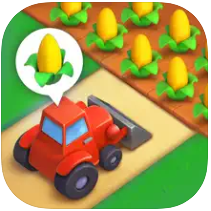The basic rules of mahjong revolve around building a complete hand by drawing and discarding tiles. While specific rules can vary depending on the variant (e.g., Hong Kong, Japanese Riichi, Chinese Classical), the core gameplay is consistent. Here’s a beginner-friendly breakdown of the basic rules:
1. **Objective**
- The goal is to be the first player to complete a **winning hand**, which typically consists of **4 sets** (sequences or triplets) and **1 pair**.
- A **set** can be:
- A **sequence (chow)**: Three consecutive numbers in the same suit (e.g., 2-3-4 of Bamboos).
- A **triplet (pung)**: Three identical tiles (e.g., three 5 Characters).
- A **quad (kong)**: Four identical tiles (though it counts as a triplet for the purpose of completing a hand).
2. **Setup**
- **Tiles**: A standard mahjong set has 144 tiles, divided into:
- **Suits**: Bamboos, Characters, and Dots (numbered 1 to 9).
- **Honors**: Winds (East, South, West, North) and Dragons (Red, Green, White).
- **Bonus Tiles**: Flowers and Seasons (optional, depending on the variant).
- **Walls**: Tiles are shuffled and stacked face-down to form a square "wall."
- **Dealing**: Each player is dealt 13 tiles, and the game begins with the dealer drawing a 14th tile.
3. **Gameplay**
- Players take turns drawing a tile from the wall or picking up a discarded tile to improve their hand.
- After drawing, a player must discard one tile to maintain 13 tiles in their hand.
- The game continues in a counterclockwise direction.
4. **Completing a Hand**
- To win, a player must complete their hand by forming **4 sets and 1 pair**.
- A winning hand can be completed by:
- Drawing the required tile from the wall.
- Picking up a tile discarded by another player (if allowed by the rules).


5. **Calling Tiles**
- Players can "call" a discarded tile to complete a set, but this must be declared immediately:
- **Chow**: To complete a sequence (only allowed from the player to your left).
- **Pung**: To complete a triplet.
- **Kong**: To complete a quad.
- Calling a tile reveals part of your hand, so use this strategically.
6. **Winning the Game**
- The first player to complete a valid hand declares **"Mahjong"** and wins the round.
- The winner’s hand is scored based on the specific combination of tiles and the rules of the variant being played.
7. **Scoring**
- Scoring varies by variant, but points are typically awarded for:
- The type of sets (e.g., triplets are worth more than sequences).
- Special patterns (e.g., all one suit, honors, or rare combinations).
- Bonus tiles (e.g., flowers or seasons).
- The winner receives points from the other players based on the value of their hand.
8. **Special Rules**
- **Kongs**: If a player forms a quad (kong), they must draw an additional tile to maintain 14 tiles.
- **Flowers/Seasons**: These tiles are bonus tiles and can earn extra points but are not part of the main hand.
- **Dead Wall**: Some variants use a "dead wall" of tiles that are reserved for special purposes (e.g., replacing flowers or seasons).
9. **Etiquette**
- Play in turn and avoid revealing your tiles unnecessarily.
- Be mindful of discarding tiles that could help your opponents.
- Respect the rules and customs of the specific mahjong variant you’re playing.
10. **Practice and Learn**
- Start with simpler hands like **All Chows** or **All Pungs**.
- Gradually learn more complex patterns and strategies as you gain experience.
By understanding these basic rules and practicing regularly, you’ll quickly get the hang of mahjong and enjoy this fascinating game!
Related News
- How To Get The Kingdom Come Deliverance 2 Twitch Drops
- How To Find The Kingdom Come Deliverance 2 Brunswick Armor – COMPLETE Guid
- EA FC 25 Server Issues Resolved: Weekend League Extended
- What is the Fortnite Shogun X Boss & How To Beat It
- How To Play Moon Knight in Marvel Rivals – Beginner Guide
- Marvel Rivals Login Error 4: How To Fix It
- Marvel Rivals Psylocke Tips and Tricks – Beginner Guide
- The 10 Best Indie Horror Games To Try on Steam in 2025
Hot News
- What is the sichuan style mahjong?
- How to win at mahjong for beginners?
- What is the basic rule of mahjong?
- Chinese Official Mahjong Scoring Rules
- Is there a solution to every mahjong game?
Games rankings
-
1

Astral Takers APK
News \ 未知
-
2

Mario Kart Tour
News \ 260.8 MB
-
3

Free Fire
News \ 1.3 GB
-
4

DC: Dark Legion
News \ 706.1 MB
-
5

Spider Fighter 3: Action Game
News \ 343.9 MB
-
6

Clash Royale
News \ 791.2 MB
-
7

Roblox
News \ 272.6 MB
-
8

Blossom Bliss: Sort&Design
News \ 289.7 MB
-
9

Tomb of the Mask: Pixel Maze
News \ 264.5 MB
-
10

Township
News \ 274.2 MB


















